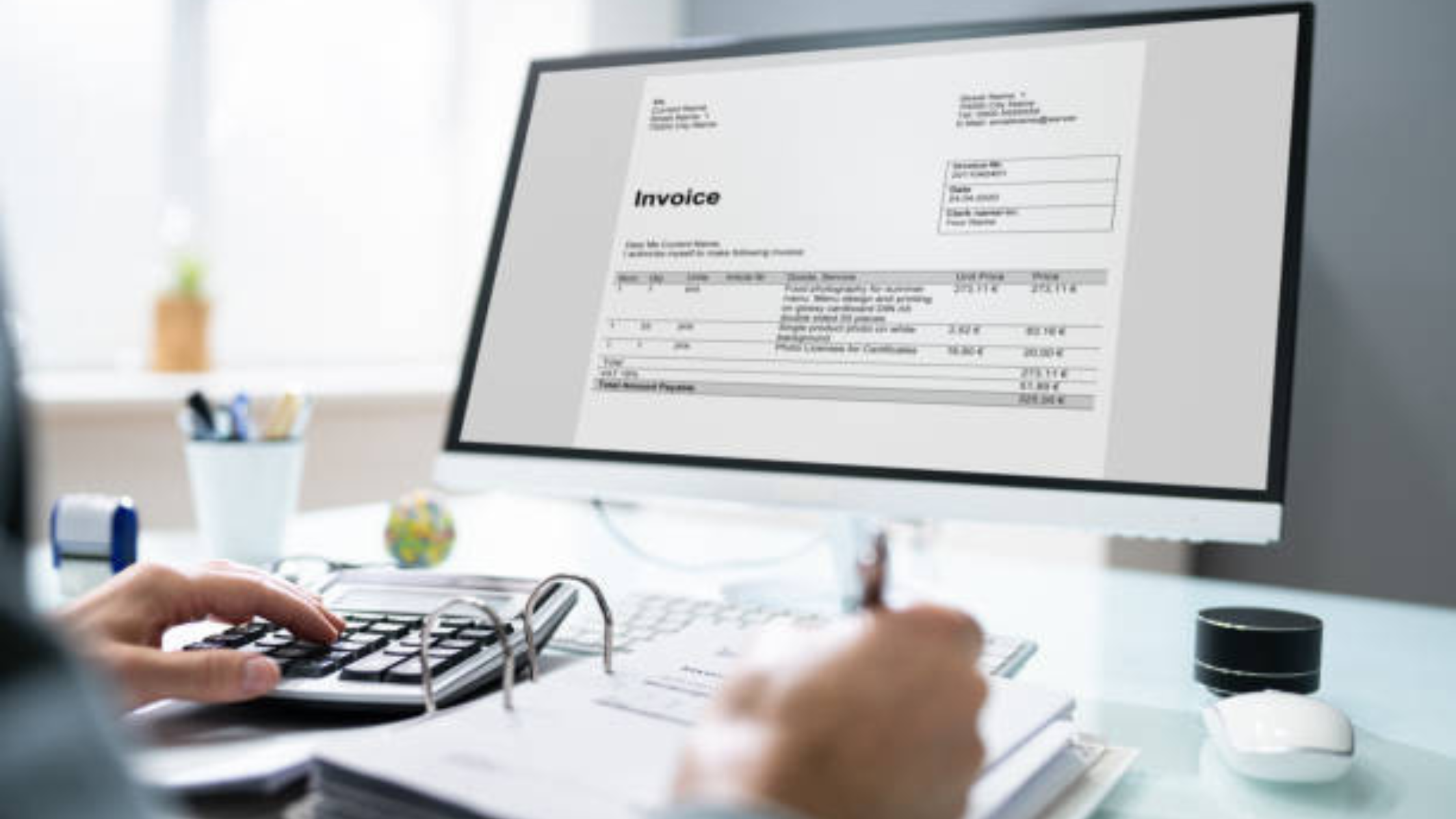Maximize Efficiency with Stationary Bills for Your Store

In the competitive retail landscape, maximizing efficiency while minimizing costs is crucial for the success of any store. One area where businesses can significantly improve their operational efficiency is by optimizing their stationary bills. By carefully managing expenses related to stationary supplies such as paper, ink, pens, and other essentials, store owners can free up financial resources to invest in growth and innovation. This not only streamlines daily operations but also enhances the overall profitability of the business.
In this guide, we will explore practical strategies and tips to help store owners reduce stationary costs without compromising on quality or service. From negotiating better deals with suppliers to implementing digital solutions, we will delve into proven methods that can help your store save money and operate more efficiently. Join us on this journey to discover how you can leverage smart stationary bill management to drive success and sustainability for your retail business.
Understanding Stationary Bills
Defining Stationary Bills
Stationary bills refer to the expenses incurred in purchasing supplies needed to operate a store or business smoothly. These bills encompass a wide range of items including paper, pens, printer ink, envelopes, and other essential office supplies. While they may seem insignificant compared to other operational costs, stationary bills can add up significantly over time and impact the overall expenses of a store. It is crucial for businesses to track and manage these expenses effectively to ensure they do not eat into profits unnecessarily.
Significance of Stationary Bills
Impact on Budget : Stationary bills, though seemingly small individually, can collectively make up a significant portion of a business's budget. Regularly purchasing office supplies without proper oversight can lead to overspending and budget constraints.
Operational Efficiency : Adequate supply of stationery items is essential for maintaining operational efficiency. Lack of necessary supplies can disrupt daily tasks and workflow, affecting productivity.
Brand Image : The quality of stationery used by a business can reflect its professionalism and attention to detail. Investing in high-quality supplies can enhance the brand image and leave a positive impression on clients and customers.
Environmental Considerations : With increasing focus on sustainability, businesses are opting for eco-friendly stationery options. Choosing such supplies not only reduces environmental impact but also aligns with corporate social responsibility goals.
Managing Stationary Expenses
Inventory Management : Implementing an effective inventory management system helps in monitoring stock levels, avoiding overstocking or stockouts, and reducing unnecessary expenses.
Bulk Purchases : Buying stationery items in bulk quantities often leads to cost savings due to discounts offered by suppliers. However, businesses should balance bulk purchases with storage space availability and item shelf life.
Vendor Negotiation : Engaging in negotiations with stationery vendors can result in better pricing or additional benefits like extended credit terms, free delivery, or customized orders.
While stationary bills may appear inconsequential, they play a crucial role in the overall financial health and operational efficiency of a business. By understanding the significance of these expenses and implementing effective management strategies, businesses can optimize their stationary spending and contribute to long-term success.
Strategies for Effective Stationary Bill Management
Managing stationary bills efficiently is crucial for maintaining cost control and optimizing operational processes. By implementing effective strategies, organizations can streamline their stationary bill management processes and ensure cost-effectiveness. Let's explore some key strategies for effective stationary bill management:.
- Implementing Digital Billing Systems for Streamlined Processes
Incorporating digital billing systems can significantly enhance the efficiency of stationary bill management. By automating the billing process, organizations can reduce manual errors, improve accuracy, and expedite the payment process. Digital systems also provide real-time insights into stationary expenses, making it easier to track spending and identify cost-saving opportunities.
- Conducting Regular Audits to Track and Organize Stationary Purchases
Regular audits are essential for monitoring and organizing stationary purchases. By conducting audits at regular intervals, organizations can identify any discrepancies, track usage patterns, and ensure compliance with budgetary constraints. Audits also help in assessing the effectiveness of existing procurement strategies and implementing necessary adjustments to optimize stationary spending.
- Engaging in Negotiations with Suppliers to Secure Cost-Effective Rates
Negotiating with suppliers is a key aspect of effective stationary bill management. By engaging in negotiations, organizations can secure cost-effective rates for stationary supplies, thereby reducing overall expenses. Building strong relationships with suppliers, exploring bulk purchase options, and seeking discounts can all contribute to achieving favorable pricing terms.
- Leveraging Technology for Inventory Management
Utilizing technology for inventory management can play a significant role in effective stationary bill management. Implementing inventory tracking systems can help in monitoring stock levels, identifying fast-moving items, and avoiding overstock situations. By leveraging technology, organizations can make informed decisions regarding stock replenishment, leading to better cost control and efficient resource allocation.
- Implementing Sustainable Procurement Practices
Incorporating sustainable procurement practices into stationary purchasing can benefit both the environment and cost management. Opting for eco-friendly and recyclable stationary options not only reduces environmental impact but can also lead to long-term cost savings through reduced waste and resource conservation.
- Employee Training and Awareness Programs
Educating employees on the importance of cost-effective stationary management through training and awareness programs can foster a culture of accountability and efficiency. By promoting responsible consumption practices and highlighting the impact of wasteful spending, organizations can empower their workforce to contribute to cost-saving initiatives and optimize stationary usage.
By implementing a holistic approach that combines digital solutions, regular audits, supplier negotiations, technology utilization, sustainable practices, and employee engagement, organizations can effectively manage their stationary bills, control costs, and enhance operational efficiency. These strategies not only drive financial savings but also promote sustainable business practices and organizational effectiveness in the long run.
Benefits of Optimizing Stationary Expenses
Cost Savings
One of the primary benefits of optimizing stationary expenses is the substantial cost savings it offers. Businesses can achieve this by carefully evaluating their stationary needs, negotiating better deals with suppliers, and implementing strategies to use resources more efficiently. For example, by centralizing purchasing processes, businesses can take advantage of economies of scale and secure discounts for bulk orders. Additionally, by periodically reviewing expenses and identifying areas where savings can be made, businesses can streamline their operations and reduce unnecessary costs.
Enhanced Budget Management
Optimizing stationary expenses also plays a crucial role in enhancing budget management within an organization. By maintaining a detailed record of stationary costs and monitoring expenses closely, businesses can gain better insights into their financial health. This allows for more accurate budget forecasting, enabling businesses to allocate resources effectively and plan for future expenditures. Moreover, by setting clear budgetary goals and regularly assessing spending patterns, businesses can proactively identify areas for improvement and make informed decisions to ensure financial stability and growth.
Improved Operational Efficiency
Another significant advantage of optimizing stationary expenses is the potential for improved operational efficiency. By streamlining procurement processes and standardizing stationary supplies, businesses can minimize wastage, reduce inventory holding costs, and enhance overall operational productivity. Furthermore, by investing in quality supplies that meet the specific needs of the organization, businesses can improve workflow processes, boost employee satisfaction, and ultimately drive business performance. Overall, optimizing stationary expenses is not just about cost reduction but also about fostering a culture of efficiency and resource optimization within the organization.
Sustainability and Environmental Impact
In addition to the financial benefits, optimizing stationary expenses can also contribute to sustainability efforts and reduce the environmental impact of business operations. By choosing eco-friendly stationary options, businesses can align with green initiatives, reduce carbon footprint, and promote responsible consumption. This not only enhances the company's reputation but also demonstrates a commitment to environmental stewardship. Moreover, by implementing paperless solutions and recycling programs, businesses can further reduce waste generation and support a more sustainable future.
Employee Productivity and Satisfaction
Optimizing stationary expenses can have a direct impact on employee productivity and satisfaction. Providing employees with high-quality, functional stationary items not only improves work efficiency but also boosts morale and engagement. When employees have access to the tools they need to perform their tasks effectively, they are more likely to feel valued and motivated. Additionally, customized stationary options or ergonomic supplies can contribute to a comfortable and ergonomic work environment, reducing the risk of injuries and enhancing overall well-being.
Innovation and Brand Image
Efforts to optimize stationary expenses can also spur innovation and enhance brand image. By investing in creative and unique stationary solutions, businesses can differentiate themselves in the market, attract customers' attention, and leave a lasting impression. Custom-branded stationary items not only serve as promotional tools but also reflect a company's identity and values. Furthermore, by staying updated on the latest stationary trends and technologies, businesses can showcase their commitment to innovation and adaptability, positioning themselves as industry leaders.
Real-life Examples of Successful Implementation
Case Study 1: Cutting Costs Without Sacrificing Quality
Learn how Company XYZ implemented a comprehensive cost-saving strategy without compromising the quality of their stationery. By negotiating better contracts with suppliers and implementing a centralized procurement system, they were able to reduce their stationary bills by 20%.
Case Study 2: Going Green and Saving Green
Discover how Company ABC transitioned to sustainable and eco-friendly stationery options to not only reduce their environmental impact but also save on costs. By switching to recycled materials and digital solutions, they were able to cut down their stationary expenses by 15%.
Case Study 3: Streamlining Processes for Efficiency
Explore how Company 123 optimized their stationery management processes to improve efficiency and reduce waste. Through the use of inventory tracking software and implementing strict usage policies, they were able to streamline their operations and lower their stationary costs by 25%.
Case Study 4: Leveraging Technology for Cost Reduction
In the digital age, technological advancements have revolutionized how businesses manage their stationary expenses. Company UVW embraced automation and digital tools to streamline their procurement processes, leading to significant cost savings. By utilizing cloud-based platforms for inventory management and adopting e-procurement systems, they were able to reduce their stationary costs by 30% while enhancing operational efficiency.
Case Study 5: Employee Engagement for Sustainable Practices
Employee engagement plays a crucial role in implementing cost-saving strategies related to stationary expenses. Company PQR encouraged employee participation in waste reduction initiatives and promoted responsible consumption practices. By fostering a culture of sustainability within the organization, they not only reduced their stationary costs by 18% through decreased wastage but also boosted employee morale and retention rates.
Case Study 6: Vendor Collaboration for Mutual Benefit
Collaborating closely with stationery vendors can lead to mutually beneficial outcomes for both parties. Company EFG established strategic partnerships with suppliers to explore innovative cost-saving opportunities. Through joint initiatives such as bulk purchasing agreements and shared sustainability goals, they were able to achieve a 22% reduction in stationary expenses while supporting local businesses and reducing carbon footprint.
Case Study 7: Continuous Improvement through Data Analytics
Data-driven decision-making is instrumental in identifying cost-saving opportunities within stationary procurement processes. Company LMN leveraged advanced analytics tools to analyze consumption patterns and optimize inventory levels. By implementing predictive analytics for demand forecasting and personalized procurement strategies, they successfully decreased their stationary costs by 27% and ensured optimal stock management.
These diverse case studies exemplify the multifaceted approaches that businesses can adopt to effectively manage their stationary bills while promoting sustainability, efficiency, and innovation in their operations.
Conclusion
Implementing stationary bills for your store can greatly enhance efficiency by streamlining the billing process, reducing errors, and improving overall organization. By investing in this simple yet effective solution, businesses can save time, reduce costs, and provide a better customer experience. Embracing stationary bills is a practical step towards maximizing efficiency and ensuring smooth operations in retail environments.







